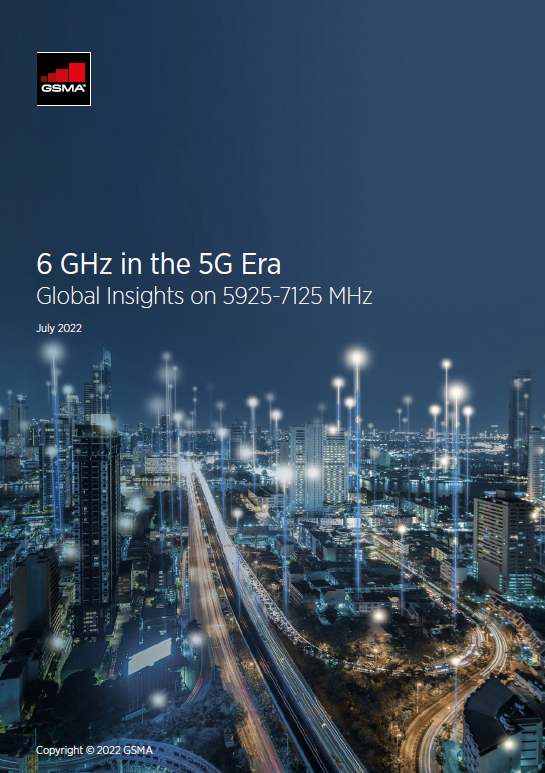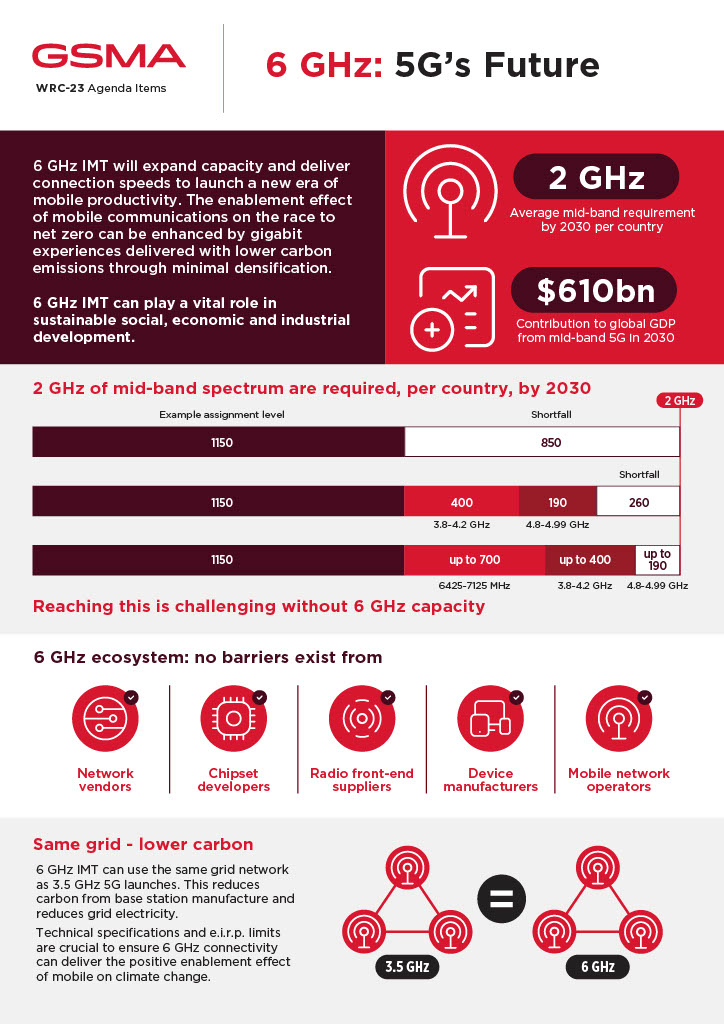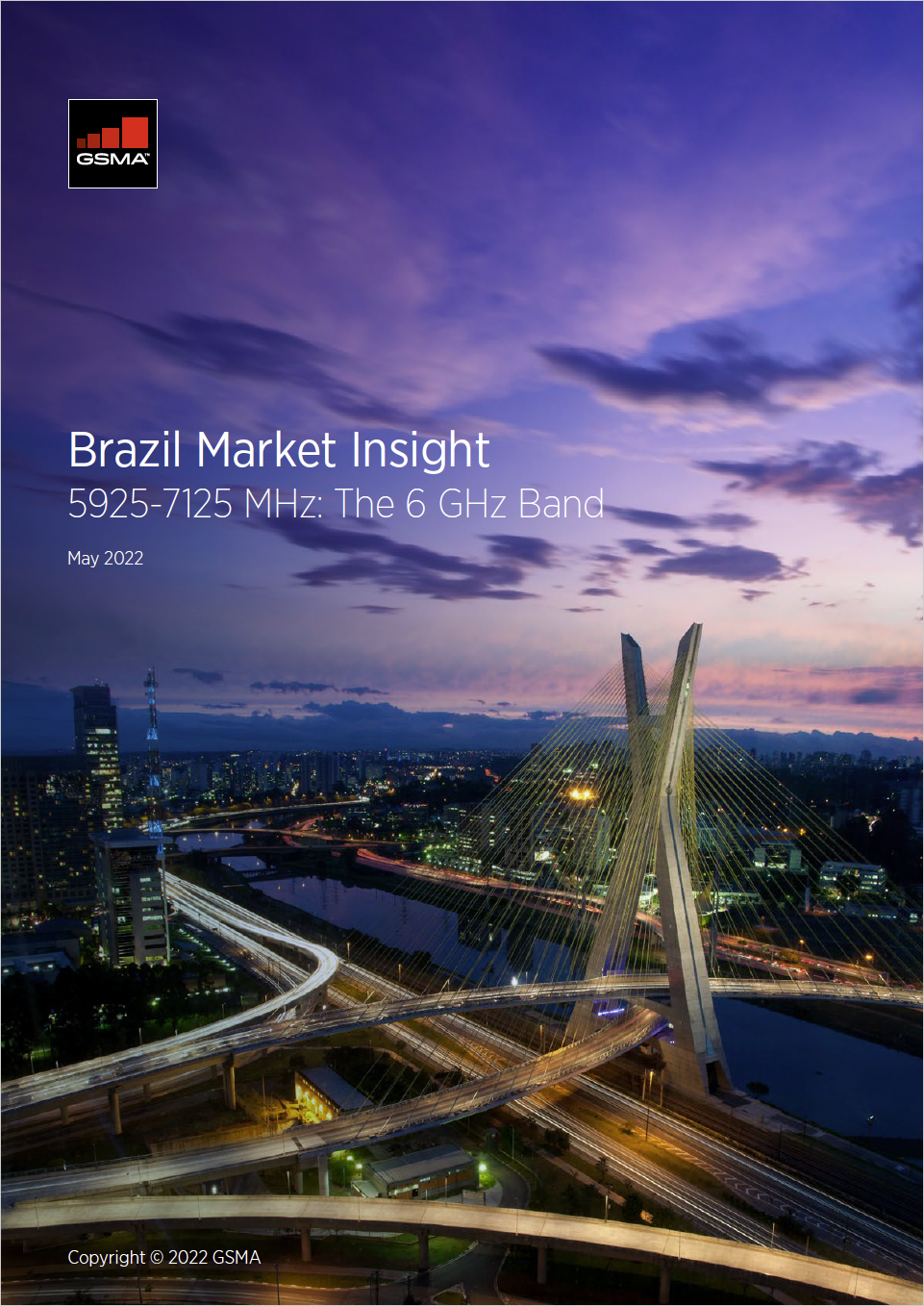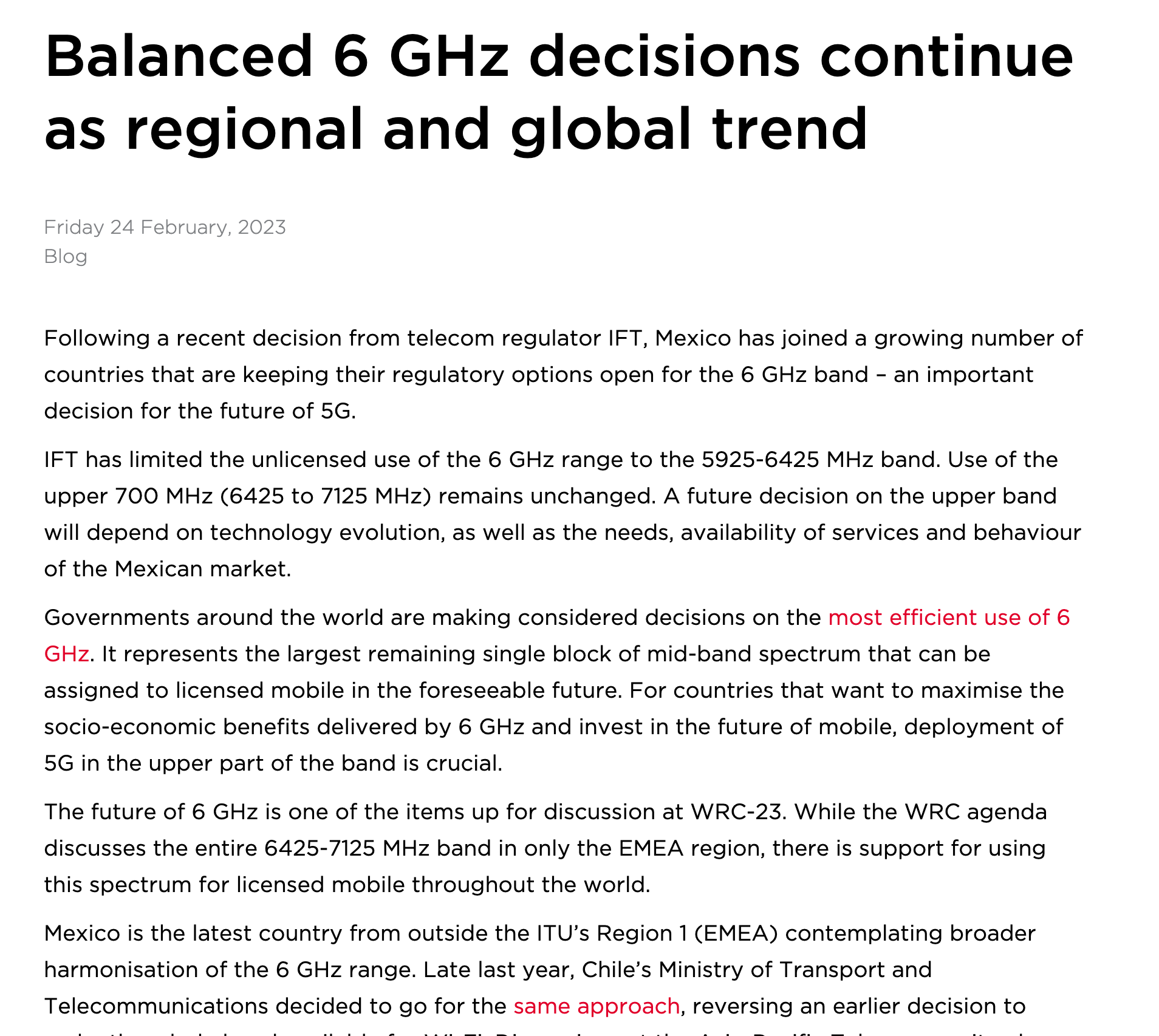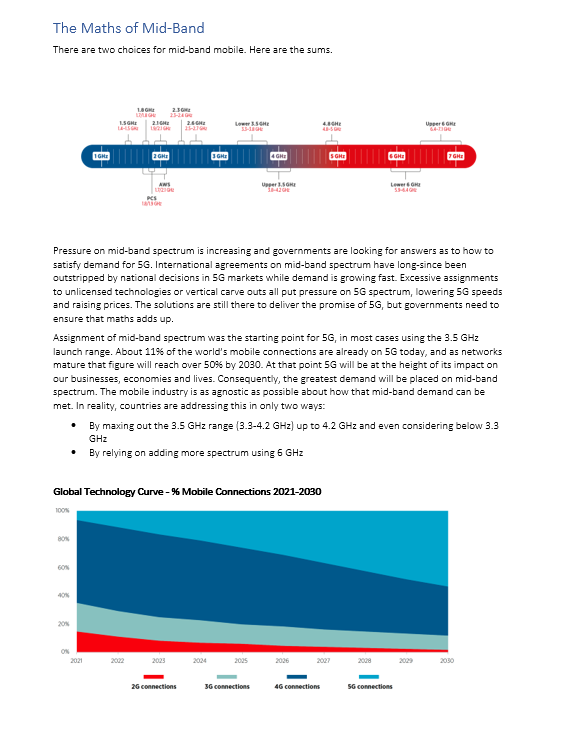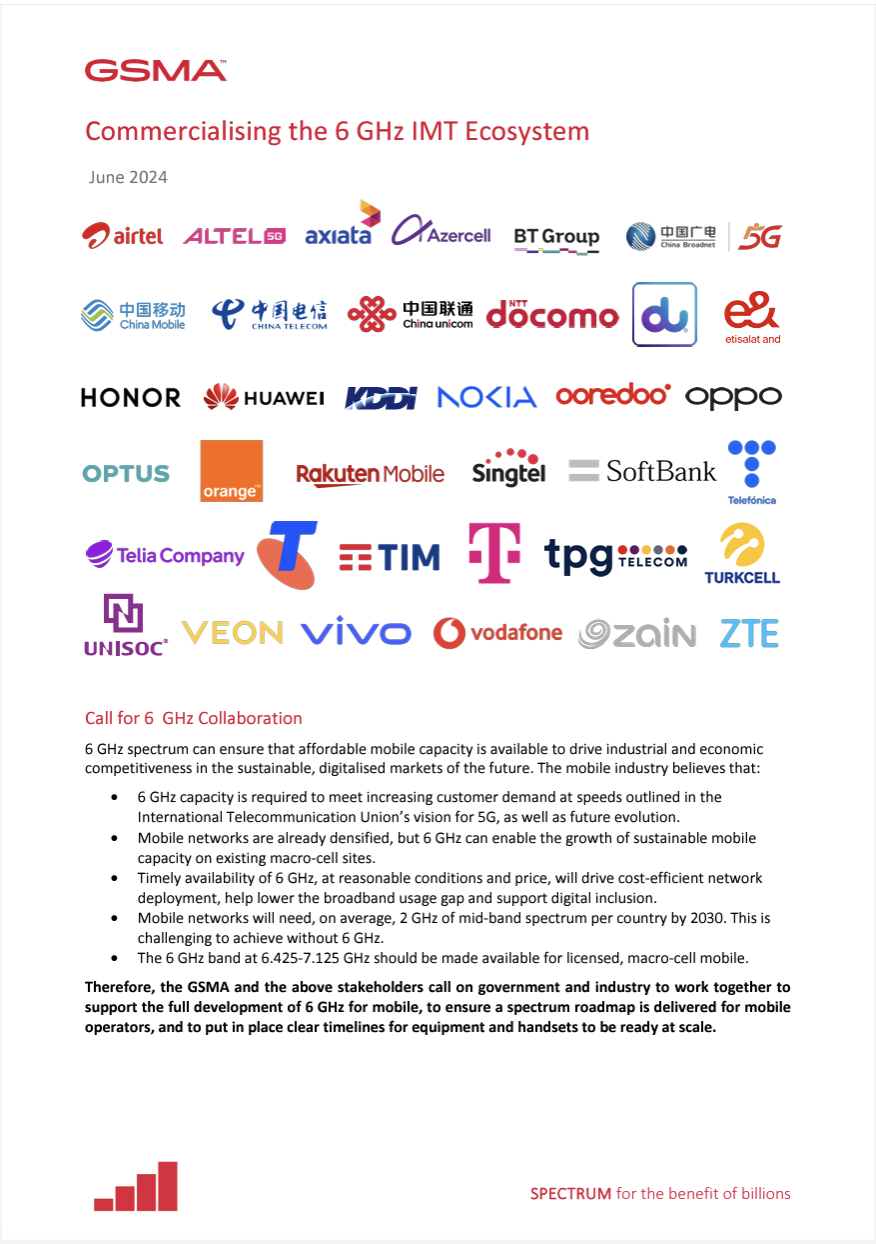6 GHz 5G spectrum can play a central role in sustainable social and industrial development. This section gives guidance on why the mobile industry believes the 6 GHz range is vital to the future of global connectivity.
With its ability to offer high-capacity, city-wide 5G, mid-band spectrum plays a core role in delivering 5G networks all over the world. Mid-band 5G spectrum will deliver more than $610 billion in global GDP in 2030, accounting for almost 65% of the overall socio-economic value generated by 5G, according to research from GSMA Intelligence.
For mobile to flourish, each country needs 2 GHz of mid-band spectrum to meet demand by 2030. This is a challenging goal, but the earliest adopters are starting to move closer to this target in their spectrum roadmaps and through assignments. Governments around the world need to make a carefully considered decision as to what the most efficient use of 6 GHz spectrum will be.
The World Radiocommunication Conference in 2023 (WRC-23) defined the international harmonisation of 6 GHz spectrum. Support for 6 GHz at WRC-23 from countries representing 60% of the global population showed the scope for ecosystem scale, and more countries are expected to join the global harmonisation at WRC-27.
The GSMA now asks that governments identify the 6 GHz band to mobile / IMT in their national tables of allocation. We also ask that they publish a roadmap, after consultation with industry, regarding spectrum assignment. The GSMA believes that:
- 6 GHz capacity is required to meet increasing customer demand at speeds outlined in the International Telecommunication Union’s vision for 5G, as well as future evolution.
- Mobile networks are already densified, but 6 GHz can enable the growth of sustainable mobile capacity on existing macro-cell sites.
- Timely availability of 6 GHz, at reasonable conditions and price, will drive cost-efficient network deployment, help lower the broadband usage gap and support digital inclusion.
- Mobile networks will need, on average, 2 GHz of mid-band spectrum per country by 2030. This is challenging to achieve without 6 GHz.
- The 6 GHz band at 6.425-7.125 GHz should be made available for licensed, macro-cell mobile.


